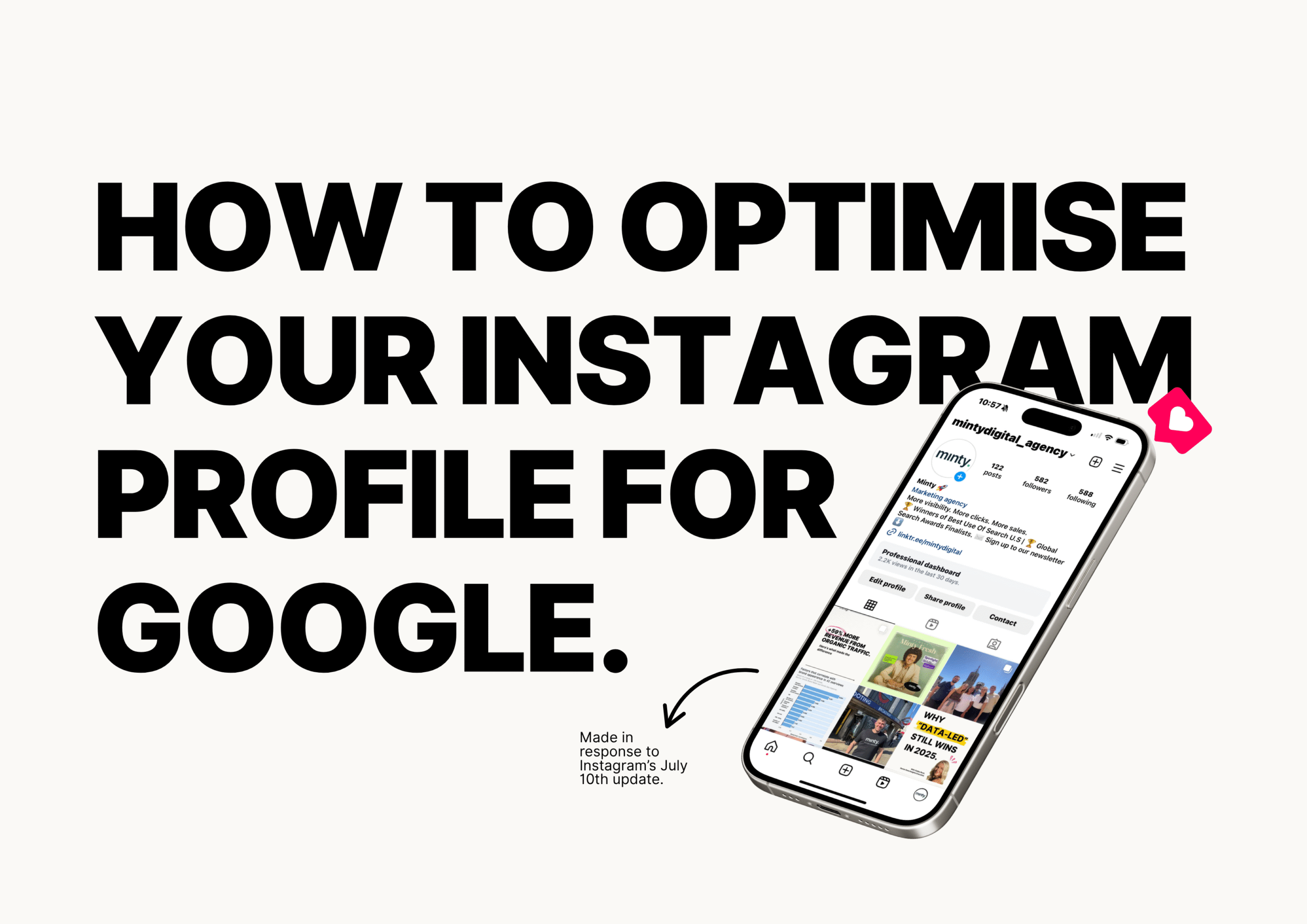Instagram Posts Now Show on Google – So What Does That Mean for Your Brand?


Free Download: Instagram Search Optimisation Checklist
In response to Instagram’s July 10th update, we’ve pulled together a practical guide to help you optimise your profile for search from bio structure to cross-platform visibility.
Google results are starting to look a lot more like your social feed. Instagram content from Business and Creator accounts is now being indexed and shown in search results, not just inside Instagram, but in Google, Bing, and even ChatGPT.
This marks a major shift in how people discover content online and how brands need to think about SEO. What used to be a game of keywords and backlinks is now a brand-focused, cross-platform game.
So let’s talk about what that means for you.
Visual Search
Search behaviour has been shifting for a while now. Gen Z are 25% less likely than Gen X to use Google for search, with nearly half of them turning to social platforms like Instagram and TikTok instead. The dominance of visual search is clear, and Google is adapting.
With Instagram posts now appearing directly in Google and Bing results, the lines between social media and search engines have never been blurrier. For brands, this is both a wake-up call and an opportunity. Your Instagram grid isn’t just a curated feed for followers, it’s a live portfolio that’s being pulled into search engines and presented to people who may never have heard of you before.
And in 2025, your visibility doesn’t hinge solely on keywords, it on how you present yourself online. That means:
- Your bio acts as a homepage. If it’s not clear, keyword-rich and intent-led, you’re missing out on visibility.
- Captions are headlines. Front-load them with relevance.
- Hashtags have another purpose beyond discoverability on the platform.
- Pinned posts and Highlights will be the first thing a new visitor sees when they land on your profile from search.
What This Means for Brands
For big brands, it’s another channel to manage. For smaller brands, it’s a chance to leapfrog the competition. Google’s algorithm has long prioritised legacy websites with high authority. But with social media posts now appearing in results, there’s a new route to the top if you’re smart about it.
Visual-first industries stand to gain the most. Food, beauty, fashion, travel, hospitality, if your product or service is inherently visual, your content now forms a huge part of your SEO.
The images of your product line? That explainer carousel and the behind the scenes content? All of it now has the potential to surface in a Google search result if you’ve set things up properly.
A single Instagram post can now tell Google:
- What you do
- Where you do it
- Who it’s for
What You Should Do About It
We’ve created a full Instagram Search Optimisation Checklist , but here’s the gist:
- Switch to a professional account and enable indexing. You cannot appear in search as a personal or private account.
- Treat your bio like SEO copy. Include your service, location and USP.
- Audit and optimise older posts. Refresh captions with keywords. Archive off-brand content.
- Pin your best content. Think educational, relevant, timeless.
- Cross-link your platforms. Your website, blog and social should talk to each other. This helps Google connect the dots.
Cross-Platform Visibility
Being everywhere online isn’t a vanity exercise — it’s survival. When someone searches “best reusable water bottle UK” or “wedding florist South London”, you want to show up somewhere. Ideally, you want to show up everywhere.
Let’s say someone Googles a service you offer. They see:
- An Instagram carousel post with tips
- A blog from your website answering a related question
- A product or services page with a clear CTA
In summary
Instagram’s not just where you post nice pictures. It’s where people find out who you are. Increasingly, it’s where people find you full stop.
In an AI-first, “search-everywhere” world, the brands that win will be the ones that don’t treat social and SEO as separate things. They’ll build ecosystems. They’ll connect content. And they’ll be found in all the right places.
If your current strategy treats Instagram like a brand moodboard and your SEO like a technical to-do list, it’s time to rethink. Because the future of search is visual, integrated, and already happening.
Want more of this?
Sign up to our newsletter 👇
Unsubscribe anytime.